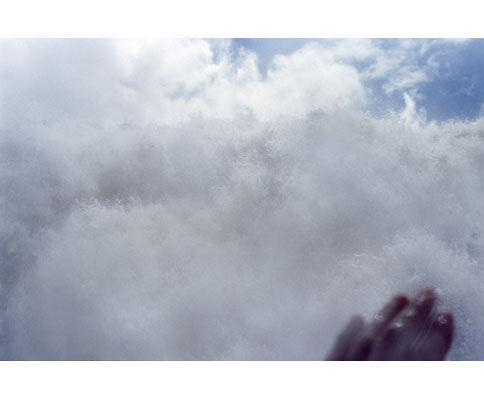Jo Yarrington’s drawing, photographs, and architecturally-based installations have been shown in exhibitions at Artists Space, NY, Rotunda Gallery, NY, The Cathedral Church of St. John the Divine, NY, National Museum of Catholic Art, NY, DeCordova Museum and Sculpture Park, MA, Museum of Glass, WA, Aldrich Contemporary Art Museum, CT, and William Benton Museum of Art, CT. International exhibitions have included Galeria Sala Uno, Italy, Temple Gallery Italy, Centro de las Artes de Guanajuato, Mexico, Christuskirche, Germany, Glasgow School of Art, Scotland, Garnetthill Synagogue, Scotland, and Glasgow Cathedral, Scotland.
Recent articles include Glass Magazine and World Sculpture News. She is a recipient of fellowships from the Pollock Krasner Foundation the MacDowell Colony, the Brandywine Institute, the Pennsylvania Council for the Arts, and the Connecticut Commission on Culture and Tourism. In 2001, she represented the United States at the Sharjah Biennial, United Arab Emirates. She is a Professor of Studio Art in the Department of Visual and Performing Arts at Fairfield University in Fairfield, CT. She lives and works in New York City and Norwalk, CT.
Statement: I’ve always been interested in liminal places, areas of the mind or reality that blur definition, that exist somewhere in between. When first reading Swann’s Way, I instantly identified with Proust’s ruminations on the space between sleeping and waking. Suspended in that glide from consciousness to unconsciousness, he seemed to find a threshold to unfettered freedom and clarity. In Brontë’s Villette, when faced with the harsh realities and social restrictions of Victorian England, Lucy Snow could slip into her shadowland, an interior place of refuge and boundless possibilities. And, in Atonement, McEwan spoke to the fertile pause between stillness and motion when he wrote “the mystery was in the instant before it moved, the dividing moment between moving and nonmoving, when her intention took effect.” It is these elusive, shifting planes, these fluctuations in our psychic core and physical being, these changeable and charged arenas that I explore in my visual art.
I work with various combinations of glass, waxed paper, and transparent photographs, and these translucent materials function as both a physical framework and symbolic membrane. As these materials inherently capture and transform light, they grant renewed liveliness to an image or drawn mark, underscoring its origin as an idea or moment in time. Light never exists as a static entity. Its flickering assures that change is imminent.
Recently, I’ve been working on a series of sited projects in which photographs are housed in the windows and glass facades of galleries, museums and sanctuaries. Transparent and usually large in scale, the images take on a mythological dimension. This referencing of the archetype is heightened by the subject matter, images of the body and landscape which range from the erotic to the ethereal. Altered, layered, and ignited by sunlight, the work often seems to push outward, releasing its physicality and suggesting something just beyond its glass skin. At other times, projections of the images caused by sunlight’s movement around the architecture, slowly change, by their color and shape the interior space. The passing observer is caught in this inward spill of altered light, becoming a participant in an active ritual. This perpetual shifting of image and light alters the relationship between building and viewer. Transformation on many levels seems a possibility as the interior and exterior fold into one another, and the boundary between the two begins to dissolve.
Contact: jyarrington@fairfield.edu





